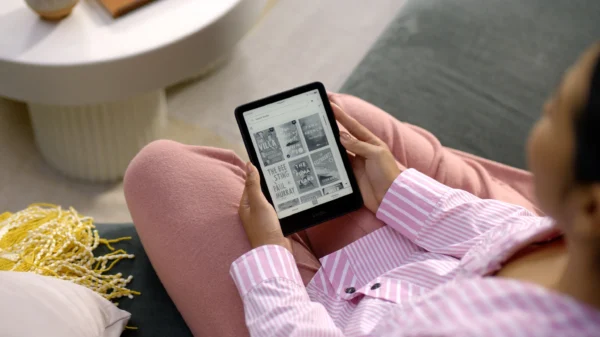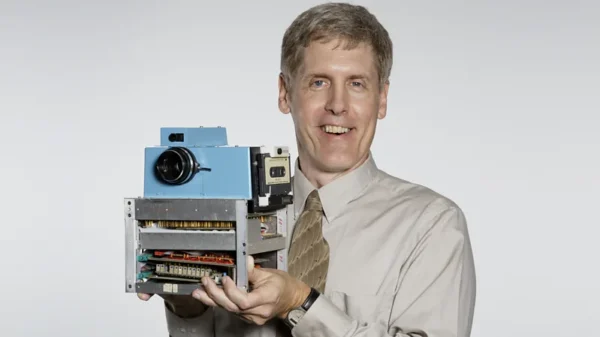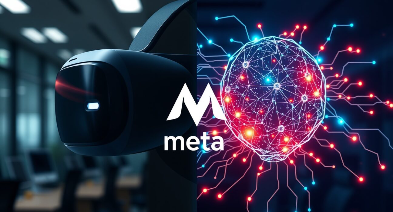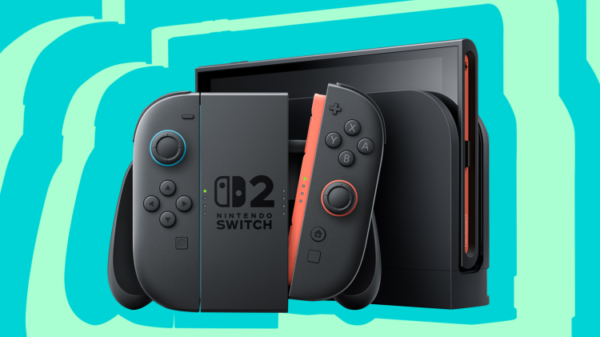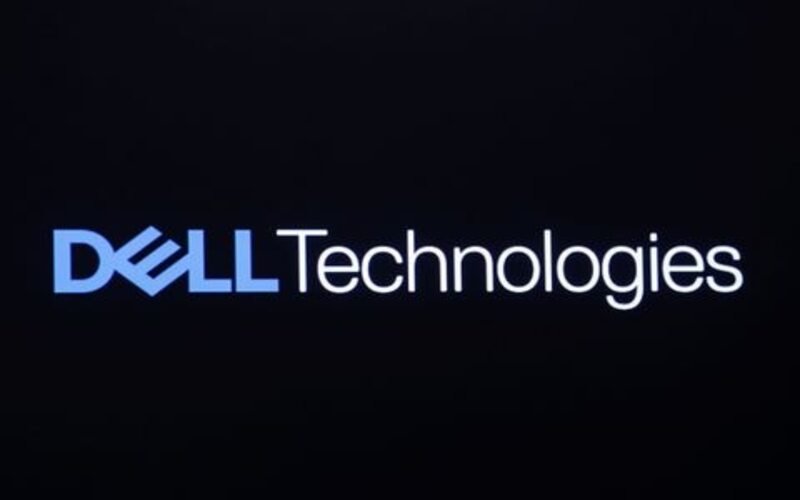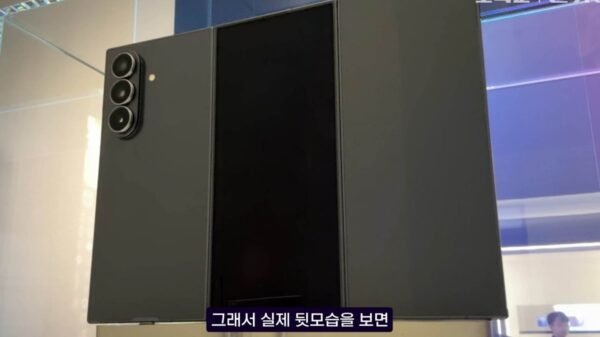Medical Devices: The Impact of Affordable Miniature Computers
“Unlocking a New Era of Healthcare: How Tiny Low-Cost Computers are Revolutionizing Medical Devices”
Key Takeaways:
- Low-cost computers like the Raspberry Pi and Arduino are transforming healthcare access and innovation.
- They make medical devices and diagnostics more available to a diverse range of people.
- Customization improves patient-specific treatments and solutions.
- Open-source collaboration drives progress in medical technology.
In a world where technological strides continue to shape our lives, a silent revolution is taking place in the realm of healthcare.
Imagine a scenario where medical devices, once confined to high-tech laboratories and exclusive clinics, are now finding their way into remote areas and underserved communities, all thanks to a groundbreaking concept: democratizing technology.
This movement, driven by the rise of tiny, low-cost computers, is redefining how we perceive and access medical innovation.
Gone are the days when complex medical devices were considered the privilege of a select few.
With the advent of compact computing platforms like Raspberry Pi and Arduino, a new era has dawned—one that prioritizes accessibility, affordability, and, above all, inclusivity in healthcare solutions.
This paradigm shift isn’t merely about bringing down costs; it’s about empowering individuals, healthcare professionals, and communities with the tools they need to improve their lives.
In this exploration, we delve into the remarkable journey of how these unassuming pieces of technology are quietly rewriting the script of medical advancement. From revolutionizing medical device development to enabling remote patient monitoring and personalized treatment, the influence of tiny, low-cost computers knows no bounds.
But as we uncover their potential, we also address the challenges that go hand in hand, including regulatory landscapes and ethical considerations.
Join us on this expedition as we unravel the story of how these unassuming devices are proving to be the catalyst for change in healthcare—a change that is both remarkable and utterly human. The age of democratized medical devices is here, and its impact is nothing short of transformative.
The Rise of Tiny, Low-Cost Computers
In an era defined by technological marvels and breakthroughs, it’s often unassuming innovations that reshape entire industries. Enter the world of tiny, low-cost computers—compact computing platforms that have managed to disrupt the status quo in ways that were previously deemed improbable.
At the forefront of this revolution are platforms like the Raspberry Pi and Arduino, which have emerged as veritable game-changers in diverse fields. What sets them apart is not just their diminutive size but also the vast potential they bring to the table.
Emergence of Compact Computing Platforms
The advent of the Raspberry Pi and Arduino marked a pivotal moment in the evolution of computing. The Raspberry Pi, developed by the Raspberry Pi Foundation, initially captured the imagination of tech enthusiasts and educators alike.
Born with the intent of fostering computer science education, it soon transcended its educational roots. Arduino, on the other hand, introduced an open-source microcontroller platform that empowered hobbyists and professionals to create interactive electronic projects.
These platforms, once conceived as tools to teach coding and electronics, quickly found applications beyond anyone’s wildest imagination.
Affordability and Versatility for Diverse Applications
One of the defining features of these tiny computing powerhouses is their affordability. Traditionally, technological innovation came at a steep price, often limiting access to the privileged few.
The Raspberry Pi and Arduino shattered this barrier by offering computing capabilities at a fraction of the cost of traditional systems. This affordability democratized technology, opening doors for individuals, startups, and even developing countries to engage with cutting-edge tools.
Moreover, it’s the sheer versatility of these platforms that has ignited their widespread adoption. From building retro gaming consoles and home automation systems to constructing weather stations and robotic projects, the possibilities are virtually limitless.
Their compact size and low power consumption make them ideal candidates for projects where space and resources are constrained. However, it’s in the realm of healthcare and medical device development that their impact has been particularly revolutionary.
Transforming Medical Device Development
The convergence of tiny, low-cost computers and healthcare has given rise to a transformation that holds immense promise for the medical industry. The paradigm of medical device development is shifting, and at its core lies the influence of these unassuming computing platforms.
Reshaping Creation of Medical Devices
Medical devices have traditionally been the domain of large corporations and research institutions, accompanied by high costs and extended development timelines. The integration of tiny, low-cost computers has challenged this conventional narrative.
These platforms offer fertile ground for innovation, enabling developers to create sophisticated medical devices without the prohibitive price tag. From portable diagnostic tools to wearable health monitors, the accessibility of these platforms is fostering a wave of creativity and problem-solving.
Examples of Innovative Devices Powered by Tiny Computers
The impact of tiny, low-cost computers is vividly illustrated by the range of innovative medical devices that owe their existence to these platforms. Imagine a low-cost ECG monitor that can seamlessly transmit real-time data to healthcare providers, ensuring timely intervention.
Consider a smart pill dispenser that uses IoT capabilities to remind patients to take their medications while recording adherence patterns. These devices, once the stuff of futuristic fiction, are now tangible realities, underscoring the transformative potential of tiny computing platforms in the medical realm.
In the realm of medical imaging, the Raspberry Pi has proven its mettle by powering low-cost, portable ultrasound devices. These devices are a lifeline for healthcare practitioners in resource-constrained areas, bringing ultrasound diagnostics to regions where traditional equipment is impractical.
This democratization of medical imaging stands as a testament to the ability of technology to bridge gaps in healthcare access.
The rise of tiny, low-cost computers is ushering in an era where medical device development is no longer confined to the elite echelons of the industry. It’s about empowering inventors, doctors, and communities to redefine healthcare solutions, one innovation at a time.
As we journey deeper into the realm of transforming medical device development, we unearth a landscape brimming with promise, ingenuity, and the potential to reshape lives.
Accessibility in Healthcare Diagnostics
In the annals of medical history, the notion of diagnostics has always held a pivotal role. It is the gateway through which medical professionals gain insights into the intricacies of the human body, aiding in accurate treatment and care.
However, for far too long, advanced diagnostics have been ensnared by a web of complexity, cost, and limited accessibility. This narrative, however, is undergoing a transformative shift, thanks to an unexpected ally: low-cost computers.
Empowering Accessible Diagnostics
Gone are the days when diagnostic tools were confined to the walls of specialized clinics and bustling hospitals. The integration of low-cost computers, such as Raspberry Pi and Arduino, is dismantling these barriers, ushering in an era where diagnostics are no longer the prerogative of the privileged few.
These unassuming computing platforms are turning the tide by making sophisticated medical diagnostics accessible to a broader spectrum of patients and healthcare providers.
Case Studies of Diagnostic Tools
The impact of this democratization becomes vivid when we delve into real-world case studies that exemplify the marriage of low-cost computers and healthcare diagnostics. Consider the portable ultrasound device powered by a Raspberry Pi.
Traditionally, ultrasound machines occupied considerable space and cost, rendering them impractical in remote or resource-limited areas. However, the emergence of compact computing has given rise to ultrasound devices that are not only affordable but also portable and versatile.
Imagine a healthcare worker in a rural village equipped with a handheld ultrasound device. With a few swipes and taps, they can capture real-time images of internal organs and monitor the progress of pregnancies. This seamless integration of technology empowers healthcare providers to extend their reach and offer precise diagnostics, even in areas where traditional medical infrastructure is scarce.
Similarly, advancements in low-cost computing have paved the way for novel diagnostic tools that can quickly analyze blood samples for diseases like malaria and diabetes. These tools leverage image processing and machine learning algorithms, all running on tiny computers, to deliver swift and accurate results.
As a result, even remote clinics and underserved regions can now benefit from reliable diagnostics, enhancing patient care and treatment outcomes.
Remote Patient Monitoring and Telemedicine
The transformative potential of technology is guiding the evolution of the healthcare delivery concept. At the forefront of this evolution is the seamless integration of low-cost computers into the landscape of remote patient monitoring and telemedicine—a fusion that has the power to transcend geographical barriers and bridge the gap between patients and healthcare providers.
Enabling Remote Patient Monitoring
One of the pillars of modern healthcare is the ability to monitor patients remotely, especially for chronic conditions or postoperative care. This is where tiny, low-cost computers come into play, serving as the conduit through which patient data flows from the comfort of their homes to healthcare professionals’ screens.
Devices that measure vital signs, such as heart rate, blood pressure, and glucose levels, are now equipped with the computational prowess of platforms like the Raspberry Pi.
Contribution to Telemedicine and Remote Areas
Telemedicine, a term that was once confined to science fiction, is now a tangible reality, largely owing to the capabilities of low-cost computers. These platforms enable seamless video conferencing, data sharing, and remote consultations between patients and healthcare providers.
Whether it’s a rural community with limited access to medical facilities or an elderly individual who finds it challenging to travel, telemedicine ensures that medical expertise is just a few clicks away.
Moreover, the integration of low-cost computers has revolutionized healthcare in remote areas. Imagine a mobile clinic outfitted with these devices, offering telemedicine consultations to communities that were previously isolated from proper healthcare.
These platforms not only empower healthcare practitioners to offer expert advice but also enable them to remotely monitor chronic conditions and adjust treatment plans accordingly.
The fusion of low-cost computers and healthcare is democratizing diagnostics, transforming how patients access medical expertise and how healthcare providers extend their reach. As we continue to explore the impact of these unassuming computing platforms, we unravel a tapestry of innovation, empowerment, and the promise of a healthier, more accessible future.
Customization and Personalized Medicine
In the realm of healthcare, the adage “one size fits all” is increasingly giving way to a new paradigm—one that embraces individuality and tailors medical solutions to each patient’s unique needs.
At the heart of this transformation lies the synergy between low-cost computers and personalized medicine, an alliance that is revolutionizing how healthcare is delivered and treatment is prescribed.
Empowering Tailored Medical Solutions
The inherent flexibility and versatility of low-cost computing platforms like the Raspberry Pi and Arduino offer a canvas on which personalized medical solutions can be intricately crafted. These platforms serve as the building blocks for devices that can adapt to patients’ specific conditions, ensuring precision in diagnosis, treatment, and monitoring.
From wearable devices that track an individual’s vitals in real time to implantable sensors that relay data directly to healthcare providers, the potential for customization is limitless.
Instances of Personalized Treatment and Monitoring
Consider a scenario where an individual with a chronic condition requires constant monitoring. With the aid of low-cost computers, a personalized monitoring system can be devised.
This system not only tracks the patient’s health parameters but also employs algorithms to detect anomalies and trigger alerts if intervention is necessary. Moreover, the same platform can facilitate personalized treatment plans by analyzing the patient’s medical history, genetic predispositions, and real-time data to fine-tune therapeutic interventions.
Addressing Resource Limitations
In many corners of the world, access to quality healthcare remains an elusive dream due to resource limitations and inadequate infrastructure. However, the integration of tiny, low-cost computers is proving to be a beacon of hope, illuminating a path toward equitable healthcare delivery.
Overcoming Resource Constraints
Resource limitations often translate into financial, geographical, and infrastructural challenges that impede access to medical services. Here, the nimble footprint of low-cost computers shines.
These platforms require minimal power and can operate in resource-constrained environments, making them an ideal tool for clinics and communities that lack consistent access to electricity or high-end equipment.
Bridging Gaps in Developing Regions
The influence of low-cost computing in healthcare extends to developing regions where conventional medical infrastructure is limited. Mobile clinics equipped with these platforms offer diagnostic capabilities that were previously unthinkable in these areas.
From conducting basic health screenings to diagnosing diseases, these clinics serve as critical lifelines, addressing healthcare disparities and improving health outcomes.
Regulatory and Ethical Considerations
As the marriage of low-cost computers and healthcare gains momentum, it is imperative to navigate the regulatory and ethical landscapes that underpin this revolution.
Navigating Regulatory Challenges
The integration of low-cost computers into medical devices introduces a spectrum of regulatory considerations. Ensuring compliance with standards for safety, efficacy, and interoperability is paramount to guaranteeing patient well-being.
Regulatory bodies play a pivotal role in maintaining a delicate balance between innovation and patient safety, fostering an environment where technological advancements can flourish while adhering to stringent guidelines.
Ethical Concerns and Data Privacy
With the influx of data generated by medical devices, questions of data privacy and patient safety come to the forefront. Striking a balance between harnessing data for medical advancements and safeguarding patient privacy is a pressing challenge.
Ethical considerations also encompass issues of bias in AI algorithms, as well as the responsibility to ensure that technology remains a tool for human betterment rather than a source of harm.
Collaborative Innovation and Open Source Projects
In the grand tapestry of technological progress, one thread stands out with unparalleled significance—the power of collaboration. As we gaze into the realm of healthcare and the integration of tiny, low-cost computers, it becomes evident that this thread is woven with open source principles.
The synergy between collaborative innovation and medical technology has given rise to a wave of transformative advancements that hold the promise of redefining healthcare on a global scale.
The Role of Open Source Communities
Open source communities, driven by a shared passion for knowledge dissemination and innovation, have emerged as crucibles of progress in medical technology. The ethos of openness, transparency, and collective problem-solving forms the backbone of these communities.
When combined with the capabilities of low-cost computers, these communities catalyze the creation of medical devices that are accessible, adaptable, and capable of addressing diverse healthcare challenges.
Examples of Collaborative Projects
The impact of collaborative innovation is best exemplified through a myriad of projects that have flourished within open-source ecosystems. Consider the Open Artificial Pancreas System Project, an initiative that harnesses low-cost computing platforms to create closed-loop insulin delivery systems for individuals with diabetes.
By leveraging the expertise of engineers, medical professionals, and individuals with diabetes, this project epitomizes the collaborative spirit that underpins open source endeavors.
Another remarkable endeavor is the OpenBionics project, which employs 3D printing and low-cost computers to create affordable and customizable prosthetic limbs. This initiative not only addresses the high cost of traditional prosthetics but also empowers users to participate in the design and refinement of their own assistive devices.
Future Prospects and Limitations
As we peer into the horizon of medical technology, the integration of tiny, low-cost computers unveils a future brimming with boundless potential and exciting possibilities. The path ahead is illuminated by the promise of continued innovation and its potential impact on healthcare accessibility and quality.
Envisioning the Future of Medical Devices
With the further integration of tiny computers, the landscape of medical devices is poised to undergo a transformation of monumental proportions. Imagine a world where routine health check-ups are conducted through wearable devices that seamlessly monitor vitals, analyze trends, and transmit data to healthcare providers.
Imagine surgical procedures guided by augmented reality interfaces powered by these platforms, enhancing precision and minimizing risks. This future is not confined to developed regions; it extends its reach to remote areas and underserved communities, democratizing healthcare on a global scale.
Acknowledging Limitations and Research Frontiers
However, as we navigate this exciting trajectory, it’s crucial to acknowledge potential limitations that warrant thoughtful consideration. Challenges such as ensuring the accuracy and reliability of low-cost medical devices, addressing data security concerns, and navigating the intricacies of regulatory compliance remain important considerations.
Furthermore, the potential for innovation is vast, as are the areas that require further research. Issues of bias in AI algorithms, the ethical implications of AI-powered diagnostics, and the need for robust clinical validation are just a few of the frontiers that demand exploration.
Conclusion
The fusion of technology, compassion, and human ingenuity is driving a profound transformation in the maze of healthcare. The journey we’ve embarked upon, exploring the fusion of tiny, low-cost computers and medical innovation, has unveiled a tapestry of progress that promises to reshape the landscape of healthcare delivery, accessibility, and patient empowerment.
As we cast a retrospective glance, it becomes evident that the integration of low-cost computing platforms like Raspberry Pi and Arduino is more than a mere technological trend; it is a paradigm shift that amplifies the voices of marginalized communities, democratizes access to medical advancements, and ushers in an era of personalized care.
From enabling accessible diagnostics and revolutionizing medical device development to bridging gaps in resource-limited regions and advancing telemedicine, these unassuming devices have woven threads of innovation that touch every facet of healthcare.
We’ve explored how personalized treatment plans become attainable through the flexibility of low-cost computers, and we’ve witnessed case studies where open-source collaboration has birthed life-changing medical devices.
The potential these platforms hold to extend medical expertise into remote areas and underserved communities is both inspiring and humbling, forging a path toward equitable healthcare that transcends geographical boundaries.
Yet, even amidst this exhilarating progress, we are reminded of the necessity to tread cautiously. Regulatory and ethical considerations must continue to guide our journey, ensuring that technology is used responsibly and preserving patient privacy and safety.
The pursuit of innovation also beckons us to confront challenges head-on, whether they involve technical limitations or the ever-evolving landscape of data security.
As we gaze into the future, we glimpse a horizon painted with the hues of possibilities. The trajectory of medical technology, bolstered by the integration of tiny, low-cost computers, promises a future where healthcare is not just a service but a tapestry woven with care, compassion, and innovation.
The power of customization, collaboration, and open-source initiatives sets the stage for a healthcare landscape that places the patient at the center, with technology acting as an enabler rather than an impediment.

